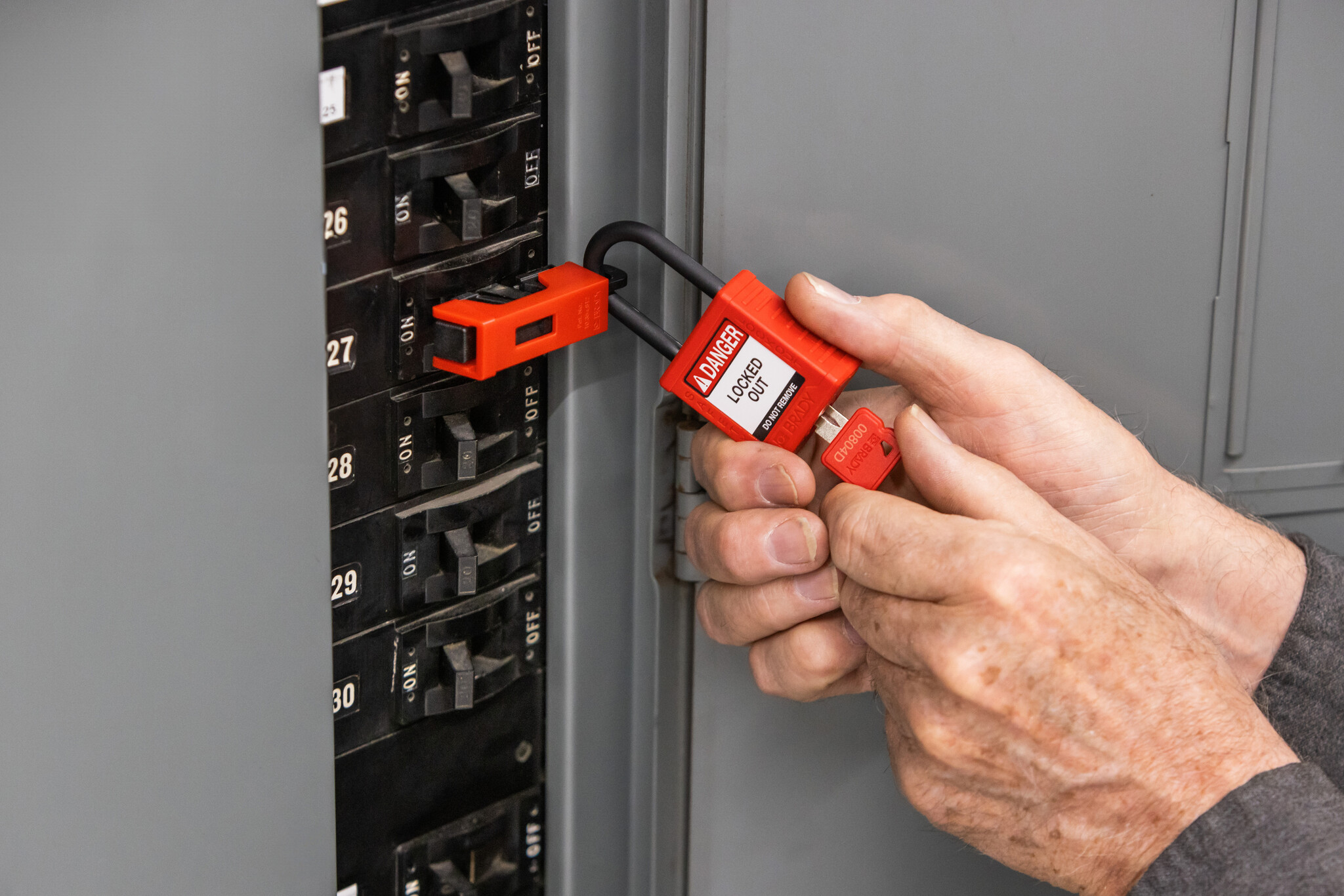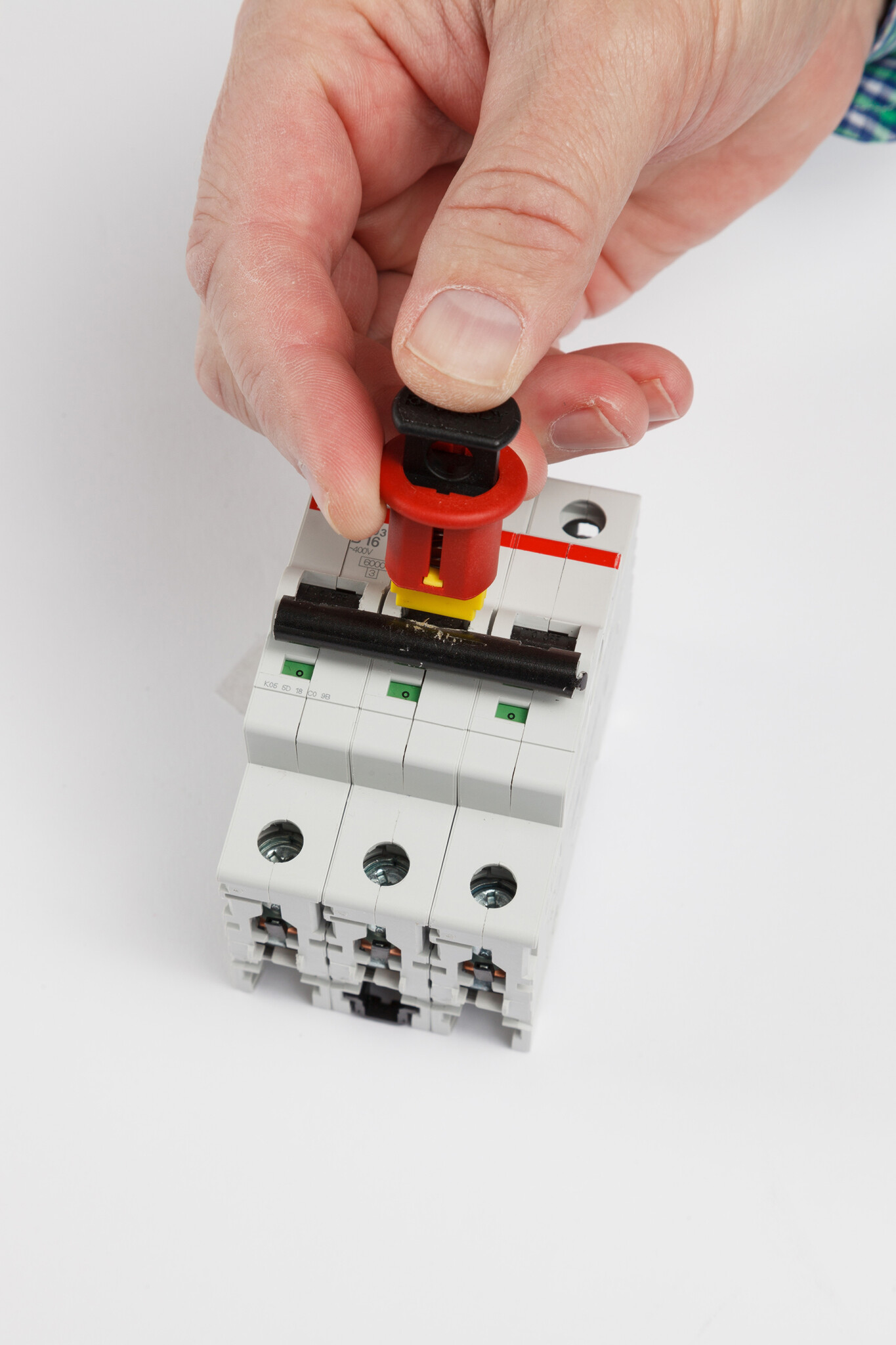Lockout Tagout for circuit breakers: Avoid danger and work safely
- Posted on
- By Marit Krol
- Posted in circuit breakers, electrical safety, lockout tagout, LOTO, machine safety
- 0

Different types of circuit breakers and the right LOTO devices
Lockout Tagout (LOTO) is an essential safety procedure to prevent machines and electrical installations from switching on unexpectedly, for example during maintenance or repairs. A crucial part of this is correctly locking circuit breakers. There are various types of circuit breakers, each with their own specific LOTO devices.
Types of circuit breakers
Circuit breakers can be broadly divided into the following categories:
- Miniature circuit breakers (MCBs) - Small circuit breakers commonly used in industrial and residential electrical panels. They have a low current capacity and are usually used for light duty applications.
- Molded Case Circuit Breakers (MCCBs) - Larger circuit breakers that can handle higher current ratings and are used in heavy-duty industrial applications. These often feature adjustable current protection and provide overload and short-circuit protection.
- Air circuit breakers (ACBs) - These are used in very high current capacity applications. They have a high switching capacity and are often used in electrical distribution systems.
- High-voltage circuit breakers - These circuit breakers are designed for networks with extremely high voltage, such as power plants and large electrical networks.
Different LOTO devices are available for each type of circuit breaker, from universal terminals to customised interlocking mechanisms.
Types of LOTO devices for circuit breakers
- Universal LOTO devices - These interlocks fit different types of circuit breakers and are flexible in use. They are useful for working environments where different types of breakers are present.
- Specific LOTO devices - Designed for a specific circuit breaker. These are often stronger and safer for a particular type, but less flexible in use.
- Cable interlocks - These are versatile and can be used for multiple components, including circuit breakers. They consist of a cable mechanism that is fed through the lever and securely locked in place.
- Lever-locks - Specially designed for lever-type circuit breakers, where a clamp or bracket holds the lever in the disengaged position.
- Plug-locks - Used to lock plugs of electrical appliances, preventing them from being inserted into a socket.

How do you decide whether you need a universal or specific model?
When choosing a LOTO device, you need to consider several factors:
- Type and size of the circuit breaker
- Some circuit breakers have unique handles or shapes that require a specifically designed locking system.
- Compatibility with multiple models
- Universal LOTO devices offer flexibility and are compatible with different types of circuit breakers.
- Safety and regulations
- Check that the device complies with applicable safety standards and guidelines, such as the OSHA 1910.147 standard.
In general, dedicated models are ideal for standardised installations, while universal models are suitable for working environments where different types of circuit breakers are used.
Installation and inspection tips
- Preparation
- Make sure you have the appropriate LOTO devices and warning tags on hand before starting the procedure.
- Installation
- Install the LOTO device according to the manufacturer's instructions and ensure that the circuit breaker is completely switched off before you start.
- Check
- After installation, a ‘Tryout’ step is crucial. Verify that the circuit breaker is really switched off.
- Use of padlocks
- Always attach a security padlock to the LOTO device to ensure that the lock cannot be removed just like that.
- Recording and documentation
- Keep a log of LOTO actions carried out and ensure that all employees are familiar with the procedure.



















Comments
Be the first to comment...